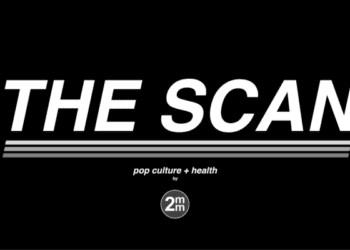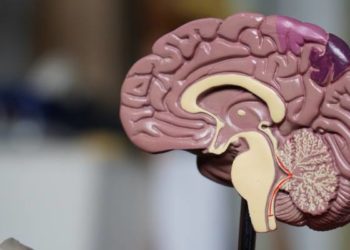Wellness Check: Mental Health
1. This systematic review and meta-analysis found that there was no significant association between breastfeeding and the occurrence of schizophrenia in children later in life.
2. However, the findings on depression and anxiety disorders were mixed. Some studies found a small protective effect of breastfeeding, while others observed no effect.
Evidence Rating Level: 1 (Excellent)
Breastfeeding contributes several health benefits to both the mother and the child. Although breastfeeding contributes to neurocognitive and socio-emotional development, there is still a lack of evidence on the role breastfeeding may play in the development of mental health disorders in the mother or child later in life. Therefore, this study aimed to assess the current evidence on the links between breastfeeding and the development of mental health disorders in both the mother and child.
Of 17,887 identified records, 21 studies were included from database inception to June 2, 2023. Studies were included if they investigated the link between breastfeeding and mental health disorder development in children and mothers. There were no restrictions on specific populations, such as high-risk groups, or the type or duration of breastfeeding. Studies were excluded if follow-up was less than 12 months since birth, they investigated associations between breastfeeding and autism spectrum disorder or attention deficit hyperactivity disorder, or if the study population consisted of premature infants. The risk of bias was assessed using the Newcastle-Ottawa Scale, and the GRADE approach was used to evaluate the certainty of evidence. The review was carried out according to PRISMA guidelines. The primary outcome was the association between breastfeeding and the development of mental health disorders in children and mothers.
The results demonstrated that there was no association between breastfeeding and the development of schizophrenia in children later in life. As for depression and anxiety, the role of breastfeeding was mixed. Some studies found a small protective effect of breastfeeding on the development of depression and anxiety in children, while others observed no effect. Only three studies looked at the impact of breastfeeding on maternal health, so no conclusions could be drawn from this population. However, the study was limited by the lack of evidence regarding other mental health disorders, such as eating disorders. Nonetheless, the present study found limited evidence to suggest that breastfeeding may have a protective effect on some mental health disorders in children later in life, but further research is necessary to explore this link.
1. In this cross-sectional study, a strong positive correlation existed between a child’s glycated hemoglobin (HbA1c) levels and their depression and anxiety scores.
2. However, the association between a diabetic child’s HbA1c level and their anxiety and depression is fully mediated by parental anxiety.
Evidence Rating Level: 2 (Good)
Type 1 diabetes (T1D) is a common autoimmune disorder that results in significant lifestyle changes in those affected. The burden of illness can result in mental health disorders, such as anxiety and depression, in the affected child and their parents. Depression and anxiety are known to have a negative impact on glycemic control in diabetes, particularly on glycated hemoglobin (HbA1c) levels. However, few studies have examined the factors that may affect the relationship between HbA1c level and anxiety and depression in children. Therefore, this study aimed to investigate both individual and surrounding factors and their effect on the relationship between HbA1c level and anxiety and depression in children.
This cross-sectional study included 251 child-parent dyads. Participants were included if they were aged 12-18 years and had a diagnosis of T1D, and one of the child’s parents participated in the survey. The Generalized Anxiety Disorder Scale-7 (GAD-7) and Patient Health Questionnaire 9 (PHQ-9) Scale were used to assess mental health in both the parent and child. Data relating to demographics was obtained from a questionnaire made by the study authors, and clinical information was obtained from patients’ medical records. The primary outcomes were the association between HbA1c and mental health scores in children with T1D and the factors that mediated that association.
The results demonstrated a strong correlation between a child’s HbA1c level and their scores on the GAD-7 and PHQ-9 scales. There was also a strong correlation between the child’s HbA1c level and the parent’s scores on both mental health scales. Mediation analysis found that the parent’s anxiety fully mediated the association between HbA1c and a child’s depression and anxiety. However, the study was limited by its cross-sectional nature, which limited the ability to investigate causality. Nonetheless, this study suggested that not only does a child’s mental health impact their diabetes management, but parental anxiety also plays a role, indicating the need to address mental health concerns in both the parent and child to achieve optimal glycemic control.
Multi-domain factors are associated with social isolation among community-dwelling older adults
1. In this systematic review and meta-analysis, multi-domain risk factors, including biological, psychological and behavioral, and socioeconomic factors, significantly correlated with social isolation among community-dwelling older adults worldwide.
2. Furthermore, factors associated with higher odds of social isolation included having no spouse, self-rated poor health, having less than or equal to a high school degree, and living alone.
Evidence Rating Level: 1 (Excellent)
Social isolation has a significant impact on the mental and physical health of older adults. Unfortunately, around one-quarter of community-dwelling older adults experience social isolation. Although social isolation is associated with several adverse health effects in older adults, the factors that put people at risk of social isolation remain poorly understood. This study aimed to investigate the variables that affect the likelihood of social isolation in older adults living in the community.
Of 3,403 identified records, 42 studies were included from database inception to April 2023. Studies were included if they were observational and examined social isolation risk factors in participants 60 years or older who were living in the community. Studies were excluded if participants had serious illnesses or were hospitalized. The probability of bias of the included studies was assessed using the Agency for Healthcare Research and Quality and the Newcastle-Ottawa scale. The review was carried out according to PRISMA guidelines. The primary outcome was the effect of the various factors of interest on the risk of social isolation in older adults.
The results demonstrated that multi-domain risk factors, including biological, psychological and behavioral, and socioeconomic factors, significantly correlated with social isolation among community-dwelling older adults worldwide. Biological factors associated with social isolation included having no spouse, activities of daily living (ADL) impairment, and self-rated poor health. Other factors included having less than or equal to a high school degree, living alone, and absence of social participation. However, the study was limited by the cross-sectional nature of most of the included studies, which limited the ability to make conclusions about causation. Nonetheless, the present study identified several factors which may predispose community-dwelling older adults to social isolation.
Image: PD
©2023 2 Minute Medicine, Inc. All rights reserved. No works may be reproduced without expressed written consent from 2 Minute Medicine, Inc. Inquire about licensing here. No article should be construed as medical advice and is not intended as such by the authors or by 2 Minute Medicine, Inc.







